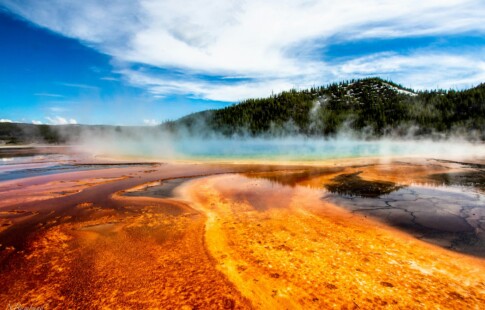
10 Nuclear Energy Uses
We are reader-supported. When you buy through links on our site, we may earn affiliate commission.
Energy is essential to power many everyday processes, like heating your home. There are multiple forms, from solar to nuclear. Here are some of the common nuclear energy uses.
What Is Nuclear Energy?
Nuclear power uses reactions, such as nuclear fission to produce electricity. Nuclear fission is when the core of an atom splits into two. Many power plants use uranium or plutonium atoms. This energy is also eco-friendly since it doesn’t release greenhouse gas emissions.
What Are Its Uses?
Nuclear energy can help provide a beneficial, clean energy source. Here are some ways this energy is used today.
1. To Explore Space
Nuclear energy fuels radioisotope systems that provide heat and power for space exploration. Scientists can use this energy to study planets like Jupiter and Saturn. Radioisotope systems convert heat created by the decay of plutonium into electrical power.
This electricity can help generate fuel for spacecraft, satellites and navigation devices. Radioisotopes are also in radioactive tracers that identify certain materials.
2. To Provide Energy for Homes

Nuclear energy is one of the nation’s largest sources of clean energy. It produces around one gigawatt of power per plant on average. This is essential in everyday functions, like heating homes and providing power for electronics.
Some energy companies are using nuclear energy in desalination plants to produce drinkable water. This is important to reduce the global effects of water scarcity.
3. For Medical Treatments
The medical industry is one of the essential nuclear energy uses. Many patients admitted to hospitals encounter radiation materials, like radioisotopes. These are found in camera imaging devices and cancer treatments.
Imaging devices provide detailed pictures and molecular information to aid with diagnoses. Nuclear materials are used for therapeutic purposes as well. For example, radioactive iodine (I-131) is used in small amounts to treat cancer.
4. Within Criminal Investigations
Detectives can use radioisotopes to identify traces of substances used in crimes. These may include things like glass, gunpowder, lead and poisons. Linking these materials back to suspects can help to solve cases quicker.
In addition, nuclear analytical techniques provide more evidence to clarify criminal cases. It allows specialists to analyze tiny traces of hair, saliva and gunshot residue.
5. Within the Transportation Industry
Transportation is one of the standard nuclear energy uses. It works well in shipping vessels. It can provide power for boats that must be at sea for long periods without refueling. In addition, it can help with submarine propulsion.
Most ships powered by nuclear reactors are submarines. The other transportation system that uses nuclear energy is hydrogen cars. The electricity from nuclear plants can be used to make hydrogen. The system can then fuel cars or provide heat without harmful emissions like carbon.
6. Within Agriculture

Nuclear energy can help control insects that harm crops. One method is the Sterile Insect Technique (SIT). SIT consists of rearing large populations that are sterilized through radiation. The sterile insects then can’t produce offspring which helps with pest management. Nuclear energy is also used in plant mutation breeding to increase crop yield.
Another common use is in fertilizers to determine how much product a plant has absorbed. Plus, this energy can make food last longer without altering nutrition.
7. When Creating Consumer Products
Nuclear energy uses come from everyday products, such as smoke detectors and watches. Smoke detectors use small amounts of americium-241, a decay product of plutonium. The americium-241 release particles ionizing the air and create an electric current. Then when smoke enters, it interrupts the current and sets off the alarm. Here are a few more products using nuclear energy:
- Clocks
- Non-stick materials
- Camera Lenses.
- Fluorescent Light Bulbs
- Glass
8. Within the Manufacturing Industry
Manufacturers use radioisotopes within tracers. They help to monitor fluid flow, detect leaks and gauge engine wear and tear. Manufacturers can even use radioactive material for equipment inspections. Nuclear energy can check the strength of metal parts.
For example, oil tube systems place radioactive sources inside the pipe. The sources are used to measure the amount of radiation that has been absorbed into the material. This is crucial when heat and pressure make direct contact harder.
9. For Environmental Tracers
Radioisotopes can help to detect and analyze different pollutants. Nuclear methods help with pollution problems, like smog formation, sulfur dioxide contamination and sewage dispersal.
Identifying these harmful substances can protect humans, wildlife and the planet. These toxins can cause illness and increase global warming effects. It’s essential to detect these pollutants before they enter oceans.
10. Helping Archaeologists
Exploring the abundance of naturally-occurring radioisotopes helps determine the age of rocks. Start by selecting the right minerals, such as potassium and measure the relative amounts of isotopes in them.
This information is beneficial to geologists, anthropologists and archaeologists. It can give a better timeline of the earth’s history.
What Are Future Uses for Nuclear Tech?
Another expert is looking for a new application of nuclear energy in a lab somewhere. The future could leverage it in impossible-to-know ways, but these are a few of the most likely outcomes based on current research.
Cobalt-60 and the Medical Sector
Many medical applications already leverage cobalt-60, which is a critical isotope in nuclear production. Hospitals use it for:
- Sterilization
- Radiation therapy
- Tracers
The use cases could be even more diverse in the future. Gamma knife radiosurgery is one of the most promising, as research over the last eight years has increased its efficacy for brain operations. It is one of many applications for nuclear that extend past utility companies.
Water Desalination

Water desalination is an expensive yet powerful prospect for the future for several reasons. Using the ocean to mitigate water scarcity concerns is critical, especially in places most severely affected by the climate crisis.
It could also be useful for offshore hydrogen electrolyzers, which could create completely green energy if they could remove the salt from water. Nuclear reactors may be a solution, helping these processes scale outside private organizations. They could eventually become government-funded if they were proven viable.
Small Modular Reactors (SMRs)
Most people think of massive power plants when they think of nuclear energy, but these are not economical or efficient to construct. SMRs would transform nuclear energy, much like solar panels democratized renewable energy.
They are more flexible, adaptable and integrable into society, bringing them closer to the people who need the energy. They are still too expensive for commercialization. However, it could be an ideal supplement to the grid amid modernization, particularly for rural areas receiving the fewest upgrades and industrial advancements.
Hybrid Energy Systems With Hydrogen
As hinted, nuclear could make offshore electrolyzers a reality, but it could also be a monumental win for hydrogen-based transportation and industry. The future energy mix will need to be a hybrid solution, as no single generator could be sufficient for a grid with increasingly high demands.
What Are the Challenges in Advancing Nuclear Fusion?
To understand nuclear energy and its future, humanity must overcome its obstacles in research and development. These include:
- Capital costs: Nuclear is one of the most expensive green generators to implement, much less research. Investments are also determined by the political climate, making funding more unpredictable.
- Issues with uranium mining: Many view nuclear power as the intermediary for a 100% renewable energy grid. However, the ethical and environmental risks of uranium mining hinder progress, and the consequences could be severe.
- Sociopolitical concerns: Those interested in energy topics have a mixed public perception because nuclear weaponry is implied to expand if power plants and reactors do the same. Regulatory action and citizen education are crucial for dismantling these associations and setting a precedent for ethical nuclear deployment.
- Lack of regulation: Nuclear energy, fusion and related applications are poorly regulated at this stage. Greater advocacy and research are necessary to combat future concerns with legislation.
Nuclear Energy Uses You Should Know
We use energy for many processes, from heating homes to agricultural production. Nuclear energy is a clean source that has many applications. Consider these nuclear energy uses the next time you go out.
This article was originally published on February 14th, 2023, and was updated on September 2nd, 2025, to provide readers with more updated information.
Share on
Like what you read? Join other Environment.co readers!
Get the latest updates on our planet by subscribing to the Environment.co newsletter!
About the author

Jane Marsh
Starting from an early age, Jane Marsh loved all animals and became a budding environmentalist. Now, Jane works as the Editor-in-Chief of Environment.co where she covers topics related to climate policy, renewable energy, the food industry, and more.





